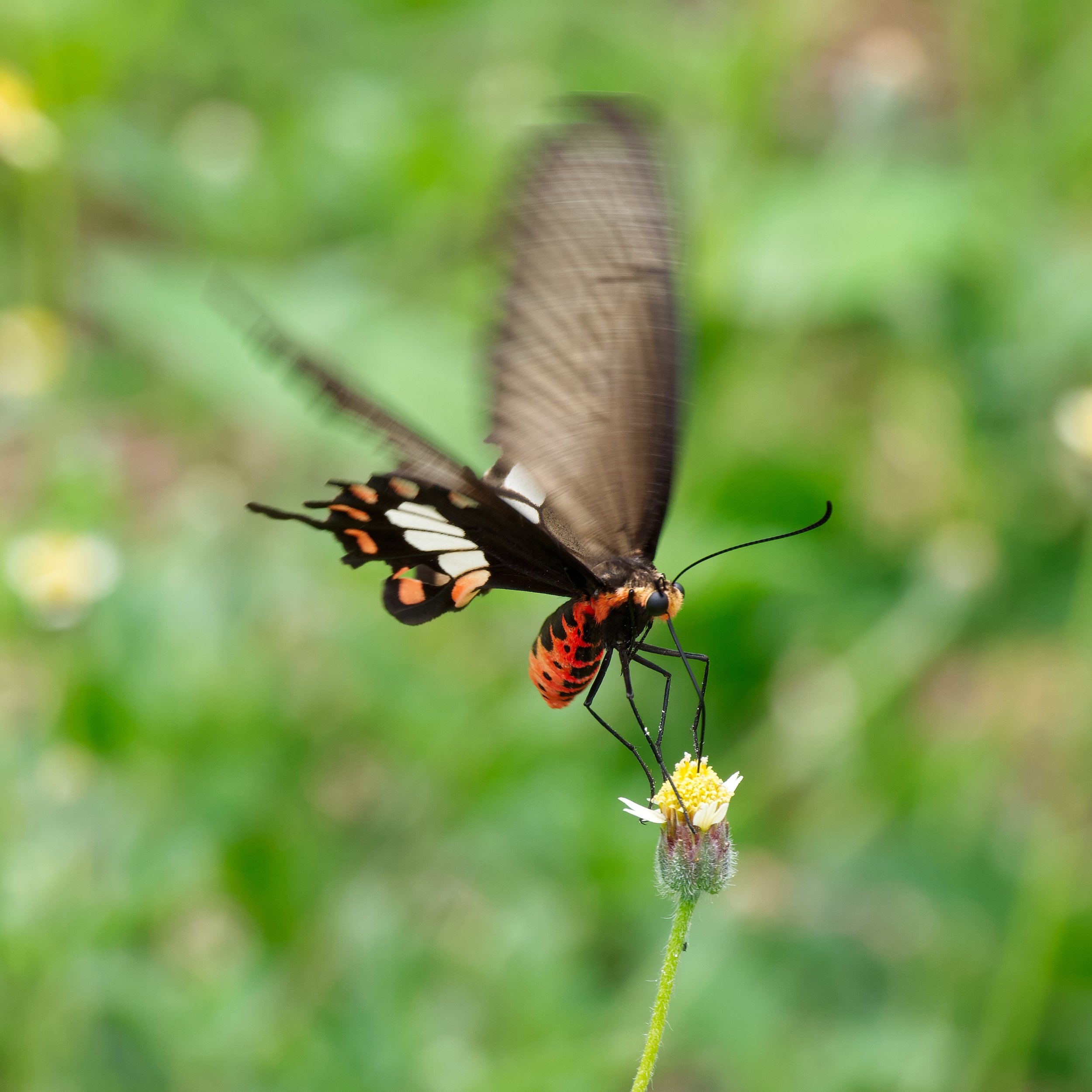ID Guidebook
Butterflies in Thailand
On view through February 1st
“What’s that, over there?” Even on vacation, my curiosity stays intact, and I creep over vines and through undergrowth to find the little lives that make our world such an interesting place. These butterflies were photographed while on two separate trips to Thailand in 2022 and 2023, a fascinating country with fascinating wildlife.
We’ll start with this absolute dandy, Drupadia ravindra, the Common Posy. Complete with eyespots and antennae-like ‘tails’, this butterfly seems to be facing both directions at once. This adaptation tricks predators into attacking its less vulnerable side, giving it a chance to fly away.
This was on my hike to Tham Than Lot Yai cave in Kanchanaburi, August 2022, which is part of Thailand’s rainy season. You can read about it on the blog, here. I also came across this Forest Quaker that day, and several other butterflies that will be posted further down.
Common Posy - Drupadia ravindra
Common Posy - Drupadia ravindra
Forest Quaker - Pithecops corvus
This guy, above, is a Violet Fourline Blue, and a part of the Lycaenidae family, along with the previous two butterflies. I found him flying about in Phetchabun during Thailand’s summer, April 2023. With temperatures creeping past 100°F and even up to 110° on certain days, butterflies are not nearly as abundant.
Violet Fourline Blue - Nacaduba subperusia
On my hike in Kanchanaburi, I was very lucky to spot this Green Dragontail, one of only two species in Lamproptera. A member of the swallowtails, Papilionidae, it is noted for it’s hyaline (glass-like) patches on its wings, it’s diminutive size, and, most obviously, those unmistakable tails. Truly a unique specimen within Lepidoptera
Green Dragontail Butterfly - Lamproptera mages
Swallowtails are quite common in Thailand as well, and these three all share similar wing markings. Above is a Red Helen, spotted in Phetchabun, below a Common Mormon, spotted in Phrae, and a Common Rose, spotted in Khon Kaen. All three have those distinctive paddle-shaped tails, red-and-yellow patches on the wings, and two sport the yellow-polka-dotted bodies that can also be seen in many North American swallowtails.
Red Helen Swallowtail - Papilio helenus
Common Mormon Swallowtail - Papilio polytes
Common Rose Swallowtail - Pachliopta aristolochiae
Below we see that a friend has joined our Red Helen. It’s a Great Zebra, part of the Graphium genus that includes swordtails and ladies, but this species seems to lack the distinctive tails.
Common Rose Swallowtail - Pachliopta aristolochiae
Great Zebra Swallowtail - Graphium xenocles and Red Helen Swallowtail - Papilio helenus
In fact, the Great Zebra looks very much like a couple of members of the Nymphalidae, seen below. Just a slight change in the wing patterns seem seperate the two.
Great Zebra Swallowtail - Graphium xenocles
Above is the deliciously named Chocolate Tiger, spotted in Phetchabun, part of the Parantica genus whose members are all called Tigers. The striking color of its abdomen often bleeds into the black of the wings. Next is the Clipper, a popular butterfly in international conservatories owing to its intricate patterns, and its numerous color variations across its range. Appropriately, this specimen was spotted not far from Bangkok’s Butterfly Garden.
Chocolate Tiger - Parantica melaneus
Clipper - Parthenos sylvia
Other discoveries in Bangkok’s Chatuchak park were this Leopard Lacewing, Plain Tiger Butterfly, and Great Eggfly The Leopard Lacewing is part of a vibrantly colored genus who range from India through Southeast Asia to Australia. The Plain Tiger has a wide range covering all of South Asia and Africa, and it may look familiar to us in North America, being in the same genus as the ever popular Monarch butterfly. It’s other common names are African Monarch or African Queen.
Leopard Lacewing - Cethosia cyane
Leopard Lacewing - Cethosia cyane
Plain Tiger - Danaus chrysippus
The Great Eggfly is another butterlfy that ranges from Madagascar to Australia. It is sexually dimorphic, meaning that males and females do not always look a like. Females are also polymorphic, meaning there are multiple variations. Interestingly, in the west of its range, females take on the look of butterflies of the genus Euploea, known as crows (pictured below, Chainat province), a milkweed feeding butterfly that is rendered poisonous by their diets. This is an instance of Batesian mimicry.
Great Eggfly - Hypolimnas bolina
Another interesting Great Eggfly fact. They range to souther Australia, but with favorable winds, can drift as far as New Zealand. Though there are no native breeding populations in New Zealand, it has been receorded there in 1951, ‘71, and 1995. This has led to a ‘common’ name in New Zealand of the Blue Moon Butterfly. This is not just a reference to it’s rarity in the country, but also to the spectacular coloration found on the dorsal side of the wings, of which I managed to snap a peek of in Phetchabun.
Euploea Core - Common Crow
Great Eggfly - Hypolimnas bolina
Finally, two more butterflies from my hike in Khanchanaburi. The first could be mistaken for a Quiestion Mark butterfly with the orange to dusk coloration on it’s dorsal wing, but when the wings are closed, we see a ventral side scored with iridescent blue scales in some exotic patterns. This is called the Wizard butterfly.
Wizard - Rhinopalpa polynice
And finally this brilliant orange butterfly is a male Cruiser. Quite a large butterfly, it is a dimorphic species as well. The males come in orange to orange-yellow coloration, while the females are a more subdued brown color, but with pale blue bars on the upper wings. I was grateful to see this butterfly on my hike, as I was for seeing all these butterflies. This gallery will be up through next February, any questions, feel free to get in touch!
Wizard - Rhinopalpa polynice
Common Cruiser (Male) - Vindula erota


